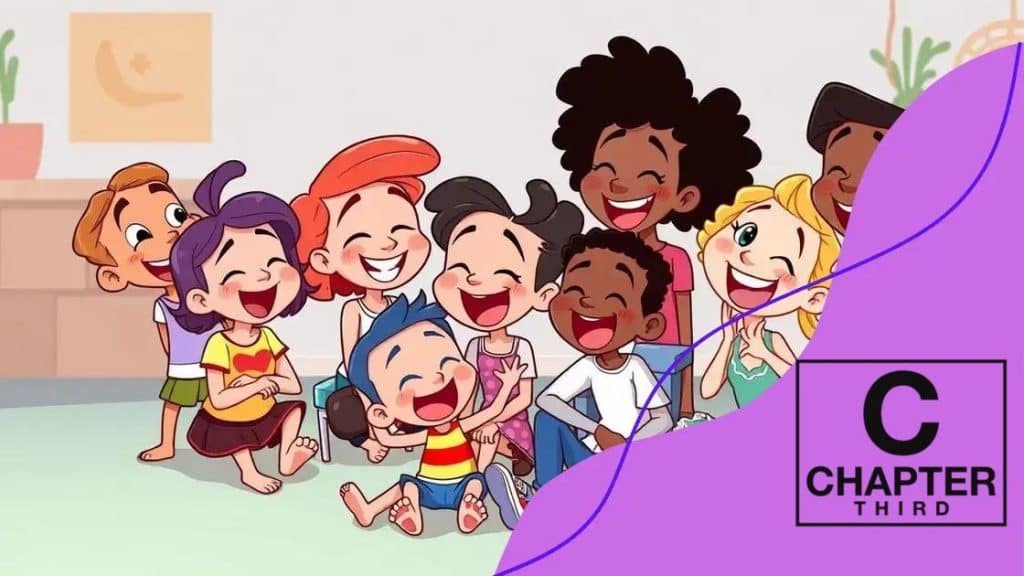Characters that challenge stereotypes with humor

Humor fosters empathy and connection by breaking down barriers, allowing individuals to relate to each other and challenge stereotypes through shared laughter and relatable comedic situations.
Characters that challenge stereotypes with humor capture our attention and prompt us to rethink societal norms. Think about your favorite comedic characters—how many defy the usual expectations? Let’s dive into their importance!
The role of humor in challenging stereotypes
The role of humor in challenging stereotypes is both significant and impactful. Often, humor provides a unique approach to address difficult subjects. By using laughter, we can explore sensitive topics and question societal norms. Comedians and characters who bring light to stereotypes do more than entertain; they provoke thought and dialogue.
When humor is effectively employed, it can dismantle preconceived notions. Many characters have utilized this technique to confront and deconstruct stereotypes. Comedic situations allow audiences to recognize absurdities and, in turn, foster empathy.
How humor affects perception
Humor often changes the way we view characters and situations. When we encounter a comedic character that defies expectations, we are encouraged to reconsider our biases. This process can lead to greater understanding. Some important aspects of this phenomenon include:
- Redefinition: Comedy enables a reexamination of traditional roles.
- Subversion: Through humor, characters can subvert stereotypes in unexpected ways.
- Connection: Laughter fosters bonds between diverse audiences and encourages acceptance.
Moreover, humor can shed light on societal issues while making them more approachable. For instance, characters from various backgrounds can share experiences that resonate with others, helping break down barriers.
Examples of humor in practice
One powerful example is the character of Tyrion Lannister from Game of Thrones. His witty remarks and self-deprecating humor challenge the perceptions of dwarfs and their roles in society. By addressing his stature with humor, he transforms a potential weakness into a point of strength.
Additionally, shows like The Office often use humor to highlight the quirks of workplace dynamics. Characters like Michael Scott navigate stereotypes, often revealing their flaws in a light-hearted manner. Such portrayals invite viewers to reflect on their own biases.
In conclusion, the role of humor in challenging stereotypes cannot be overstated. It serves as a powerful tool for transformation, encouraging open dialogue and understanding among people.
Examples of characters who broke the mold
Examples of characters who broke the mold can be found in various forms of media, showcasing how humor can defy expectations. These characters often present new perspectives and challenge stereotypes through clever narrative devices.
In popular culture, many characters stand out for their unique approaches. They push boundaries and redefine roles. Understanding these characters allows us to appreciate the power of humor in storytelling.
Breaking stereotypes through comedy
One notable example is Shrek, who defies the typical fairy tale hero archetype. Instead of fitting the mold, he reveals depth and vulnerability through his comedic interactions. Shrek’s journey is not just about physical appearance; it exemplifies how humor can resonate with themes of acceptance.
- Pocahontas reimagines native identity with a strong sense of humor, allowing audiences to engage with her story on a deeper level.
- Deadpool, through his fourth-wall-breaking humor, challenges conventional superhero norms by embracing flaws and imperfections.
- Leslie Knope from Parks and Recreation represents women in leadership with a comedic twist, showcasing determination and passion without succumbing to stereotypes.
These characters illustrate how humor serves as a powerful tool to convey complex messages while engaging audiences. Their stories reveal that embracing individuality can lead to deeper connections.
The impact of comedic characters
Humorous characters often highlight the absurdity of societal norms. For instance, characters like Fry from Futurama offer relatable comedy while navigating time travel. His interactions highlight his cluelessness and yet bring fresh perspectives to serious topics.
In addition, shows like Brooklyn Nine-Nine feature a diverse cast that humorously addresses stereotypes surrounding police culture. Characters like Captain Holt show that leadership can come in many forms, and through humor, change perceptions.
From fantasy to modern comedy, these characters challenge our assumptions and invite us to rethink what is possible. Their lasting impact continues to inspire laughter and thought across generations.
Cultural impact of humorous characters

The cultural impact of humorous characters is profound and far-reaching. These characters not only entertain but also play a key role in shaping societal values and attitudes. By addressing serious issues with a light touch, they encourage audiences to reflect on their beliefs.
Humor serves as a bridge, connecting people across different backgrounds. Through laughter, audiences find common ground. This shared experience can break down barriers and foster understanding. Think of shows like Friends or The Fresh Prince of Bel-Air; they use humor to explore topics like race, love, and friendship.
Humor as a tool for social commentary
Many comedic characters highlight important social issues while entertaining viewers. A classic example is Alfred E. Neuman, the mascot from Mad Magazine. His silly face challenges societal norms and questions authority, encouraging audiences to think critically about the status quo.
- Simpsons characters reflect American culture, with satire that addresses politics, media, and family life.
- South Park takes on controversial topics, using outrageous humor to provoke thought and discussion.
- Ms. Marvel, a superhero with a humorous twist, showcases the experiences of a young Muslim girl, promoting diversity.
Through these characters, humor opens up dialogues about important issues. Not only do they challenge stereotypes, but they also offer new perspectives that help audiences evolve in their understanding of different cultures.
The legacy of funny characters
The legacy left by humorous characters is evident in their lasting influence on generations. Characters like Charlie Chaplin or Lucille Ball paved the way for modern comedic expressions while tackling complex issues within society. Their relatable struggles and funny quirks still resonate today.
Additionally, shows that embrace humorous characters often lead societal conversations on topics like acceptance and inclusion. These characters often become role models, inspiring people to embrace their uniqueness. They encourage others to find joy in diversity, reminding us that laughter can transcend differences.
The psychology behind humor and stereotypes
The psychology behind humor and stereotypes is fascinating and reveals much about human behavior. Humor allows us to address uncomfortable truths in a way that is accessible and light-hearted. By laughing, we can explore serious topics without feeling overwhelmed.
Understanding how humor interacts with stereotypes helps us see its power. Comedians and writers often use stereotypes to create relatable content, which resonates with audiences. This technique highlights absurdities in situations and encourages us to question our biases. It’s this mix of comedy and critique that prompts reflection.
How laughter affects perception
Laughter plays a crucial role in shaping our perceptions. When we find something funny, we lower our defenses. This moment of vulnerability allows us to consider different viewpoints. Laughter makes it easier to confront stereotypes because it diffuses tension.
- Ingroup vs. outgroup: Humor can create a sense of belonging among similar people while simultaneously reinforcing stereotypes about others.
- Cognitive dissonance: When humor highlights contradictions in stereotypes, it can lead to moments of realization.
- Social bonding: Shared laughter brings people together, fostering empathy and understanding.
Additionally, humorous situations often come from the juxtaposition of reality and expectations. When characters behave unexpectedly, it challenges our assumptions. This cognitive shift encourages audiences to see beyond stereotypes.
Humor as a coping mechanism
For many, humor acts as a coping mechanism for dealing with stressful topics. When discussing race, gender, or identity, comedy provides a buffer. Characters who use humor to navigate their circumstances help others feel safe to engage with the material.
For example, stand-up comedians often share personal stories that break down cultural stereotypes. Their ability to laugh at their own experiences creates a shared understanding. This can ultimately foster a more inclusive environment.
The psychology of humor reveals that it can alter perceptions while promoting deeper connections. By examining the intersection of humor and stereotypes, we discover that laughter can lead us toward greater awareness and understanding.
How humor fosters empathy and connection
How humor fosters empathy and connection is an essential aspect of human interaction. When we laugh together, we create bonds that transcend our differences. Humor allows us to see the world through someone else’s eyes, making it easier to relate to their experiences and feelings.
Shared laughter has the power to break down barriers. It often comes from understanding the absurdities of life, which can unite people from various backgrounds. This connection can lead to deeper conversations and stronger relationships, as humor creates a safe space for vulnerability.
The role of humor in understanding others
When we encounter characters in stories who use humor, we often learn valuable lessons. These characters help illustrate complex emotions and situations in a way that is relatable and clear. Understanding their journeys can touch our hearts and challenge our own perspectives. Some key ways humor facilitates this process include:
- Perspective shift: Humor encourages us to step outside ourselves and consider others’ viewpoints.
- Common ground: Shared comedic moments create connections and highlight our similarities.
- Encouraging vulnerability: Humor allows people to open up and share their true selves without fear of judgment.
Furthermore, when we laugh about shared experiences, it affirms our connections. Humor makes hard times feel lighter and creates a sense of belonging. For instance, discussing childhood memories with friends while laughing strengthens those relationships.
Laughter as a path to empathy
Laughter can also serve as a powerful tool for developing empathy. When we recognize the humor in a difficult situation, we are better equipped to understand the emotions involved. This shift can lead to a more compassionate view of others. Characters like Groot from Guardians of the Galaxy remind us that even the simplest forms of humor can create bonds that resonate deeply with audiences.
Through humor, we learn to embrace our differences and celebrate each other’s uniqueness. When comedians tackle real-life issues, they often highlight how we all share similar struggles, paving the way for connection. This approach helps audiences see common humanity, fostering greater acceptance and understanding within communities.
FAQ – Questions About Humor and Its Impact on Empathy
How does humor help foster empathy?
Humor allows people to connect on a personal level, making it easier to relate to one another’s experiences and emotions.
Why is shared laughter important?
Shared laughter creates bonds between individuals, highlighting commonalities and helping to break down social barriers.
Can humor challenge stereotypes?
Yes, humor often addresses stereotypes directly, allowing audiences to question and rethink their biases in a light-hearted manner.
What role do comedic characters play in promoting understanding?
Comedic characters often depict relatable scenarios that exaggerate real-life situations, prompting audiences to reflect on societal norms and encouraging empathy.





